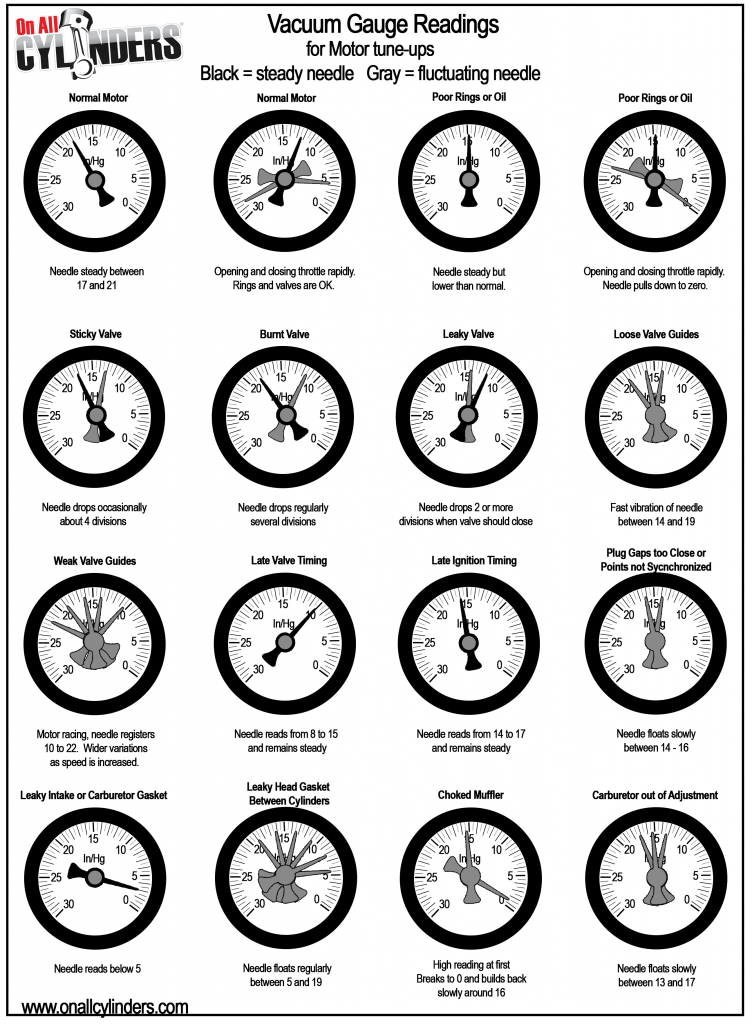Vac Visual: Quick Guide to Vacuum Gauge Readings
Intake manifold vacuum is a key indicator of engine performance.
By measuring vacuum under different engine loads and conditions, you can track down problems within your engine and make the necessary adjustments or repairs. The key is having a reliable engine vacuum gauge and then knowing how to read it properly.
We’ve said it before, but an engine vacuum gauge is an extremely valuable tool. It’s so valuable, in fact, that OnAllCylinders contributor Lori Sams put together this visual cheat sheet to help you understand common gauge readings.
Worn piston rings? Bad head gasket?
Find out what your vacuum gauge is trying to tell you below.






Love these articles, Most new tech have no clue about using a vacuum gage. My dad taught me growing up. I still use them on today’s new cars
Your so clever.
*you’re
RE:VACUUM GAUGE READINGS/NEEDLE STEADY BUT LOWER THAN “NORMAL”, THE ENGINE WOULD BE CONSIDERED NORMAL IF & WHEN HOTRODDED WITH A CAM OF MORE DURATION & MATCHED RELATED PARTS. RICK D.
My grandfather who was a Rolls Royce trained engine specialist used a vacuum gauge as a primary gauge In WW1the vacuum gauge was the primary gauge in all aircraft The point being no matter how old or how new as long as its an internal combustion engine you need to consult a vacuum gauge. When OBD1 first came out I stupidly thought that it would include all sorts of windows to the soul of the engine! I thought you would plug into one ALDL and get Vacuum ,Timing engine temp load , blow buy all sorts of usefull stuff need less to say I was disappointed However anyone trained with a vacuum gauge can read the engine Start there
change week to weak,
spelling on first page.
You can also set the timing with a vacuum gauge